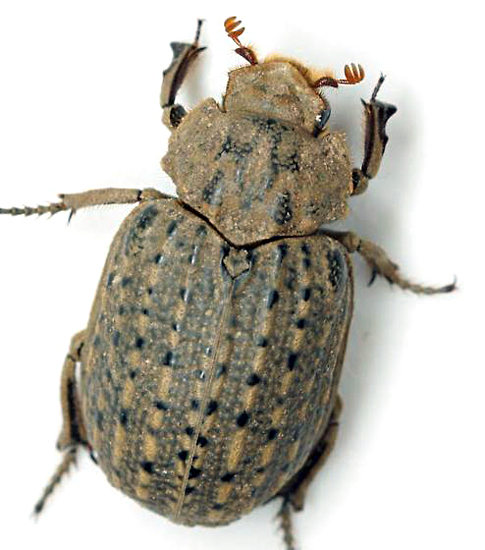1-Jun-2023: New study discovers 62 desiccation-tolerant vascular plant species in India's Western Ghats, with potential applications in agriculture & conservation
India’s biodiversity hotspot, the Western Ghats, is home to 62 Desiccation-Tolerant Vascular Plant Species which could have applications in agriculture, particularly in areas with scarcity of water.
Desiccation-tolerant vascular (DT) plants are able to withstand extreme dehydration, losing up to 95% of their water content, and they revive themselves once water is available again. This unique ability allows them to survive in harsh, arid environments that would be uninhabitable for most other plants. DT plants have been studied for their possible applications in agriculture, particularly in areas with limited water resources. In tropical regions, they are the predominant occupants of rock outcrops.
In India, DT plants have been relatively understudied. Although rock outcrops are common landscapes in the Western Ghats (WG), knowledge of DT plants in the region is poor.
A recent study by scientists from Agharkar Research Institute (ARI) Pune, an autonomous institute of the Department of Science and Technology (DST), has identified 62 DT species in the Western Ghats, many more than the earlier known nine species.
The research published in the Nordic Journal of Botany provides an overview of Indian DT plants, with a special focus on the WG, and includes an inventory of species with their habitat preferences.
In the inventory of 62 species, 16 are Indian endemic, and 12 are exclusive to the Western Ghats outcrops, highlighting WG’s importance as a global DT hotspot. In addition to rock outcrops, tree trunks in the partially shaded forests were also found to be crucial habitats for DT species, as per the study.
The team of researchers scrutinized outcrop species for their DT properties by seasonal field observations, followed by relative water content estimation protocols. Nine genera of DT plants are reported as new, also in a global perspective, with Tripogon capillatus representing the first record of an epiphytic DT angiosperm. The study also provides the first field observation-based proof of DT properties of the gesneriad Corallodiscus lanuginosus. Time-lapse video records the hydration process of this species.
The team led by Dr. Mandar Datar and involving Smrithy Vijayan, Aboli Kulkarni, and Bhushan Shigwan collaborated with Dr. Stefan Porembski from Rostock University Germany, who is recognized as an expert of tropical rock outcrops.
The findings of the study can provide valuable insights into the biodiversity and ecology of the Western Ghats and aid in the conservation of DT plant species. Besides, understanding the mechanisms by which DT plants can tolerate dehydration could lead to the development of crops that are more drought-resistant and require less water.
A new Keratin Beetle species named ‘Omorgus Khandesh’ has been discovered in the Khandesh region of Maharashtra. With the addition of this new species, now there are a total of 14 extant species of this family in India.
Keratin Beetle
Omorgus Khandesh, commonly known as the Keratin Beetle, is a species of beetle that belongs to the family Trogidae. This beetle is commonly found in the Indian subcontinent. It is known for its unique ability to digest keratin, a protein found in hair, feathers, and nails.
The Keratin Beetle is an important insect from an ecological perspective, as it plays a crucial role in the decomposition of animal carcasses. It feeds on the hair and feathers of dead animals, and thereby helps in breaking down the organic matter into simpler compounds that can be easily absorbed by the soil. The beetle is also known to feed on the eggs and larvae of other insects, making it a natural pest controller.
The Keratin Beetle has a dark brown or blackish-brown color, with a robust body that measures around 10-15 mm in length. It has a pair of antennae, which it uses to sense its surroundings and locate its prey. The beetle is usually found in dry, sandy areas, where it can easily burrow into the soil and lay its eggs.
One of the most interesting aspects of the Keratin Beetle is its digestive system, which is specially adapted to break down keratin. The beetle has a set of enzymes that can break down the tough protein molecules of keratin into smaller peptides and amino acids. These molecules are then absorbed by the gut and used for energy and growth.
The Keratin Beetle is a fascinating insect, and its unique ability to digest keratin has attracted the attention of researchers. Scientists are studying the enzymes and metabolic pathways of the beetle, in the hope of developing new technologies for the management of keratin-rich waste materials, such as feathers and hair.
Keratin Beetle can be helpful for forensic science in detecting the time of death of an animal or human. Blowflies are among the initial insects to appear during the decomposition of a body, while the ultimate stage is reached when keratin feeders arrive. This highlights the significant role of keratin feeders in forensic science.
30-Jan-2023: Noble's Helen Butterfly
Noble's Helen Butterfly
- Disappearing from ranges in Myanmar, southern China, and Vietnam
- Recorded for the first time in India
- Extremely rare
- Found in Namdapha National Park in Arunachal Pradesh. Also found in Thailand, Laos, and Cambodia
Butterflies are considered vital indicators of biodiversity and ecosystem functions
Arunachal Pradesh has a state butterfly - Kaiser-i-Hind

